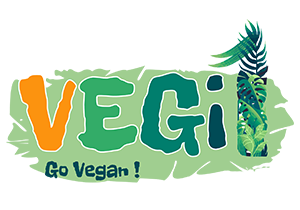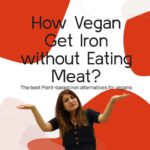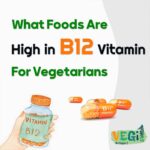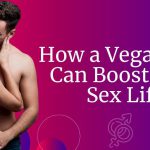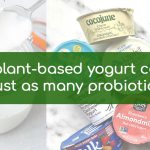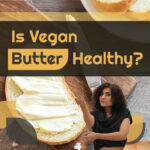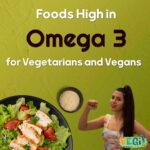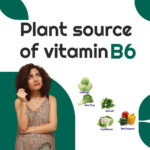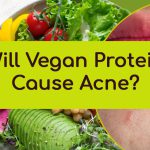Foods High in Zinc for Vegetarians and Vegans
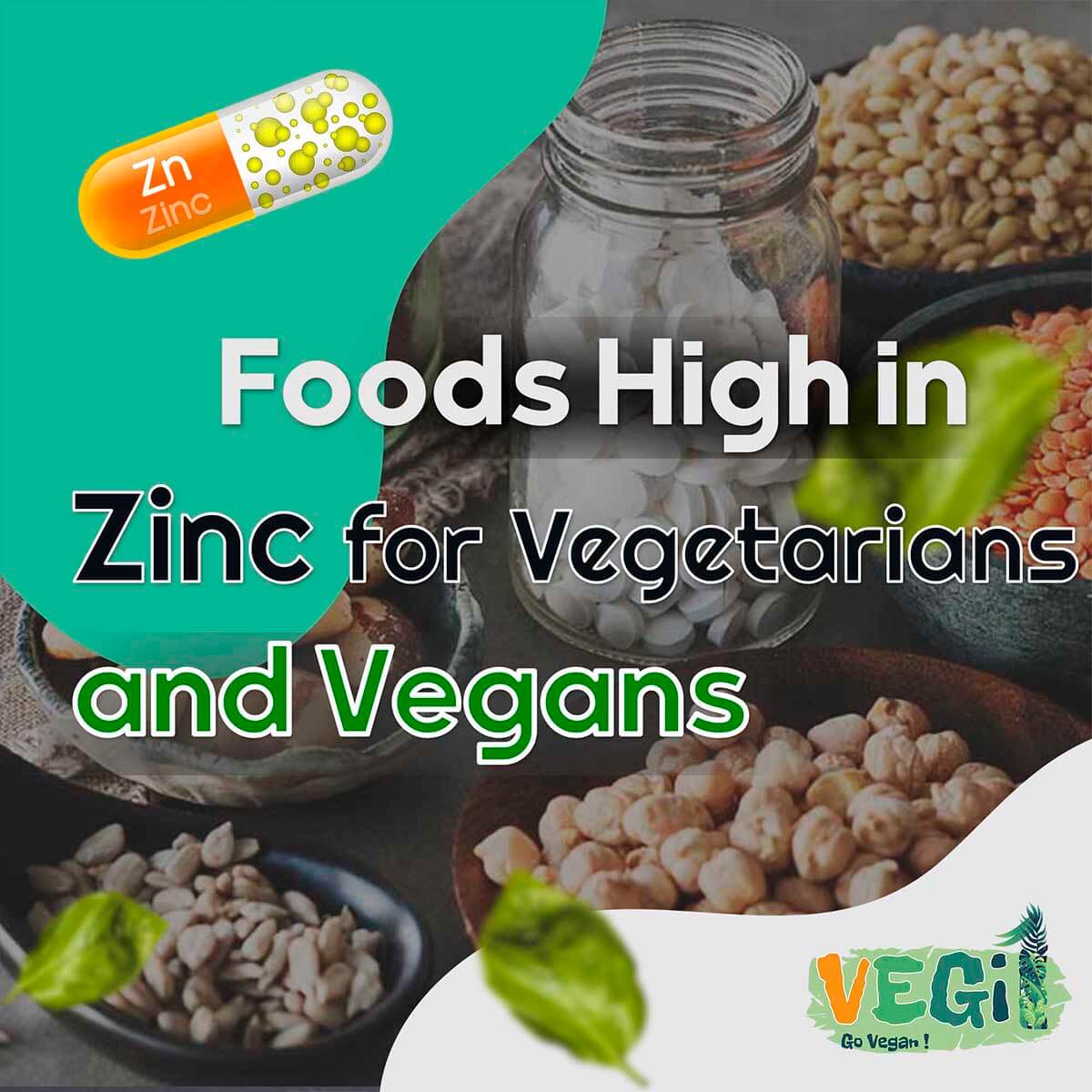
Are you looking for vegan and plant-based sources of zinc so you can tailor your meals to include more zinc? This article is for you.
Vegetarian and Vegan Foods High in Zinc – 78 Vegetables Highest in Zinc and 59 Nuts and seeds rich in Zinc for vegans and vegetarians To Ensure Healthy Hair, Nails -Plant-Based Zinc Rich foods
Zinc is an essential mineral that plays an important role in the health of your immune system, skin and hair. If you don’t get enough, it can affect your growth, reproductive health and wound healing.
Zinc is an essential mineral and is necessary for many processes in the body, including cell division and the production of collagen. It’s also important for blood clotting, and can affect your immune function. If you’re following a vegetarian or vegan diet, you may need more zinc than a meat eater because plant foods contain phytates which bind to zinc. Phytates actually block zinc absorption so it’s important to choose foods rich in this mineral and limit those high in phytates if you want optimum zinc intake.
Zinc is a mineral that plays an important role in cell growth and healing, carbohydrate metabolism, protein synthesis, DNA synthesis and repair, as well as insulin secretion. Zinc deficiency can result in slow-growing hair and nails, decreased appetite and weight loss. A lack of zinc may also cause tingling sensations in the fingers and toes; this condition is called acrodermatitis enteropathica. It’s recommended that vegetarians reach for foods high in zinc or take a supplement to make sure they’re getting enough of this essential nutrient each day.
Zinc is an essential mineral that can help regulate body temperature, sustain the immune system, produce collagen and aid in healing wounds. Vegans need zinc. Vegetarians and vegans often get enough zinc if they eat a wide variety of plant foods, including fortified products such as cereals and nutritional yeasts. Beware: grains are not the only source of zinc!
In this article you will read:
Do phytates harm zinc absorption?
Phytates are substances found in grains, beans and cereals. They block the absorption of zinc and other minerals. Most vegetarians have no trouble getting enough zinc because they eat more whole grains and legumes as part of a varied diet. Vegetarians may need to watch their zinc intake during certain times in their life, such as during pregnancy or lactation.
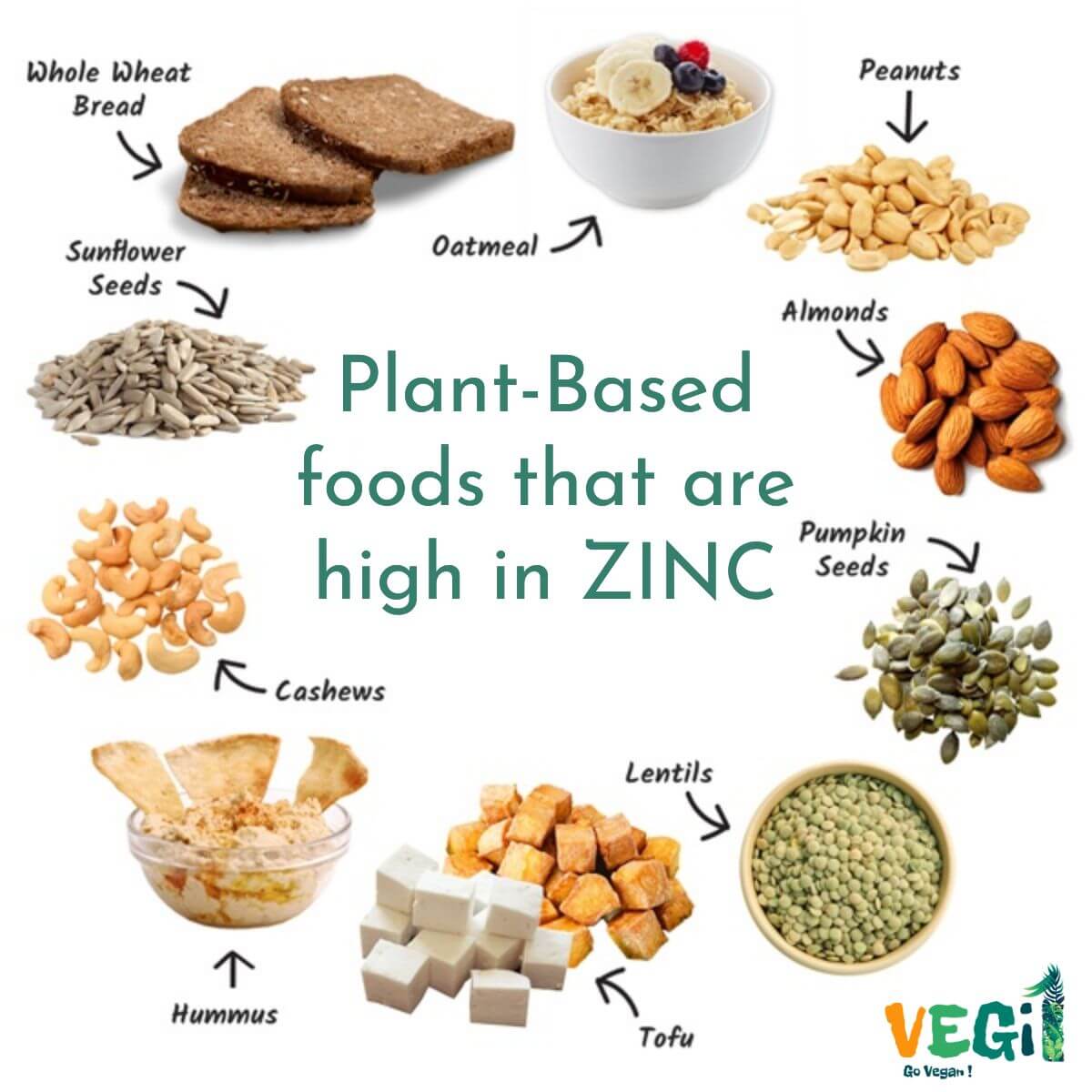
List of Vegetarian Zinc Foods
Zinc is an essential mineral that plays an important role in growth, tissue repair and immune function. Some foods are good sources of zinc, while others contain small amounts. Zinc is also available as a supplement in multivitamins and other products.
Zinc is found in many plant-based foods, such as legumes, nuts and seeds, grains and vegetables. The best vegetarian sources of zinc include:
Legumes: Split peas and beans are excellent sources of zinc. Lentils also contain large amounts of this mineral.
Nuts and seeds: Sunflower seeds are one of the best vegetarian sources of zinc because they contain more than 2 milligrams per ounce (28 grams). Other nuts and seeds with high levels include cashews, almonds and peanuts.
Grains: Wheat germ contains over 1 milligram per ounce (28 grams), which makes it one of the richest sources of zinc for vegetarians or vegans who don’t eat meat or eggs. Other good options include whole wheat breads and brown rice.
Sprouted beans are the best source of zinc, a key nutrient in immune function, brain health, and cognitive function.
78 Vegetables Highest in Zinc
This list of vegetables highest in Zinc, Zn must be used in a common serving size. Zinc is one of the most important minerals for a healthy diet, so make sure that you are getting enough minerals in your daily diet by including these high-zinc vegetables in your meal plan.
Sprouted beans are the best source of zinc, a key nutrient in immune function, brain health, and cognitive function.
Note: This list is ranked by a 100g serving size and is also ordered by the highest amount of zinc
11mg Zinc, Zn = 100% DV
| 1 | Dried Shiitake Mushrooms | 7.7mg (70% DV) |
| 2 | Pepeao Dried | 7.5mg (68% DV) |
| 3 | Freeze-Dried Parsley | 6.1mg (56% DV) |
| 4 | Kanpyo (Dried Gourd Strips) | 4-5.9mg (53% DV) |
| 5 | Seaweed Agar Dried | 5.8mg (53% DV) |
| 6 | Dried Chives or Chives Freeze-Dried | 5.1mg (47% DV) |
| 7 | Hearts Of Palm Raw | 3.7mg (34% DV) |
| 8 | Palm Hearts Cooked | 3.7mg (34% DV) |
| 9 | Vegetable Juice | 3.5mg (32% DV) |
| 10 | Fireweed Leaves Raw | 2.7mg (24% DV) |
| 11 | Seaweed Canadian Cultivated Emi-Tsunomata Dry | 2.5mg (23% DV) |
| 12 | Peppers Sweet Red Freeze-Dried | 2.4mg (22% DV) |
| 13 | Lemon Grass (Citronella) Raw | 2.2mg (20% DV) |
| 14 | Radishes Oriental Dried | 2.1mg (19% DV) |
| 15 | Soybeans Mature Seeds Sprouted Cooked Stir-Fried | 2.1mg (19% DV) |
| 16 | Irishmoss Seaweed Raw | 2mg (18% DV) |
| 17 | Tomatoes Sun-Dried | 2mg (18% DV) |
| 18 | Mushrooms Morel Raw | 2mg (18% DV) |
| 19 | Dried Spirulina Seaweed Onions Dehydrated Flakes |
2mg (18% DV) 1.9mg (17% DV) |
| 20 | Shallots Freeze-Dried | 1.9mg (18% DV) |
| 21 | Tomato Powder | 1.7mg (16% DV) |
| 22 | Carrot Dehydrated | 1.6mg (14% DV) |
| 23 | Lentils Sprouted Cooked Stir-Fried | 1.6mg (15% DV) |
| 24 | Wasabi Root Raw | 1.6mg (15% DV) |
| 25 | Cowpeas (Blackeyes) | 1.6mg (14% DV) |
| 26 | Lentils Sprouted Cooked Stir-Fried | 1.6mg (15% DV) |
| 27 | Mushrooms Stuffed | 1.5mg (13% DV) |
| 28 | Bamboo Shoots Cooked | 1.5mg (13% DV) |
| 29 | Lentils Sprouted Raw | 1.5mg (14% DV) |
| 30 | Winged Bean Tuber Raw | 1.4mg (13% DV) |
| 31 | Dried Pasilla Peppers | 1.4mg (13% DV) |
| 32 | Peas Cowpeas Field Peas Or Blackeye Peas | 1.4mg (13% DV) |
| 33 | Dried Ancho Peppers | 1.4mg (13% DV) |
| 34 | Bamboo Shoots Cooked | 1.4mg (13% DV) |
| 35 | Cowpeas (Blackeyes) Immature Seeds Frozen Cooked Boiled | 1.4mg (13% DV) |
| 36 | Mushroom Asian Cooked From Dried | 1.3mg (12% DV) |
| 37 | Mushrooms Shiitake Cooked | 1.3mg (12% DV) |
| 38 | Fungi Cloud Ears Dried | 1.3mg (12% DV) |
| 39 | Edamame Frozen Unprepared | 1.3mg (12% DV) |
| 40 | Winged Bean Leaves | 1.3mg (12% DV) |
| 41 | Cooked Shiitake Mushrooms | 1.3mg (12% DV) |
| 42 | Seaweed Kelp | 1.2mg (11% DV) |
| 43 | Garlic Raw | 1.2mg (11% DV) |
| 44 | Potatoes Mashed Dehydrated Granules | 1.2mg (11% DV) |
| 45 | Soybeans Mature Seeds Sprouted Raw | 1.2mg (11% DV) |
| 46 | Eppaw Raw | 1.2mg (10% DV) |
| 47 | Seaweed Raw | 1.2mg (11% DV) |
| 48 | Cooked Green Peas (Salted) | 1.2mg (11% DV) |
| 49 | Palm Hearts (Canned) | 1.2mg (10% DV) |
| 50 | Peas Green Raw | 1.2mg (11% DV) |
| 51 | Seaweed Laver Raw | 1.1mg (10% DV) |
| 52 | Raw Cremini Mushrooms | 1.1mg (10% DV) |
| 53 | Parsley Fresh | 1.1mg (10% DV) |
| 54 | Epazote Raw | 1.1mg (10% DV) |
| 55 | Peas Mature Seeds Sprouted Raw | 1.1mg (10% DV) |
| 56 | Stuffed Green Pepper | 1.1mg (10% DV) |
| 57 | Bamboo Shoots Raw | 1.1mg (10% DV) |
| 58 | Cowpeas (Blackeyes) Immature Seeds Raw | 1mg (9% DV) |
| 59 | Cooked Soybean Sprouts | 1mg (9% DV) |
| 60 | Seaweed Cooked | 1mg (9% DV) |
| 61 | Mushrooms Shiitake Raw | 1mg (9% DV) |
| 62 | Beans Navy Mature Seeds Sprouted Cooked Boiled | 1mg (9% DV) |
| 63 | Cowpeas (Blackeyes) Immature Seeds Cooked Boiled Drained | 1mg (9% DV) |
| 64 | Sun-Dried Hot Chile Peppers | 1mg (9% DV) |
| 65 | Eggplant WithTomato Sauce | 0.9mg (8% DV) |
| 66 | Cooked White Button Mushrooms | 0.9mg (8% DV) |
| 67 | Peas Cooked From Fresh With Tomato Sauce | 0.9mg (8% DV) |
| 68 | Potatoes Mashed Dehydrated Granules | 0.9mg (8% DV) |
| 69 | Lettuce Salad With Tomato And/or Carrots With Or Without Other Vegetables | 0.9mg (8% DV) |
| 70 | Mung Beans Mature Seeds Sprouted Cooked Stir-Fried | 0.9mg (8% DV) |
| 71 | Cowpeas With Snap Beans Cooked | 0.9mg (8% DV) |
| 72 | Beans Navy Mature Seeds Sprouted Raw | 0.9mg (8% DV) |
| 73 | Spinach Cooked From Fresh With Tomato Sauce | 0.9mg (8% DV) |
| 74 | Spinach Souffle | 0.9mg (8% DV) |
| 75 | Corn Fritter | 0.8mg (7% DV) |
| 76 | Eggplant Parmesan Casserole Regular | 0.8mg (7% D) |
| 77 | Squash Zucchini Baby Raw | 0.8mg (8% DV) |
| 78 | Oyster Mushrooms | 0.8mg (7% DV) |
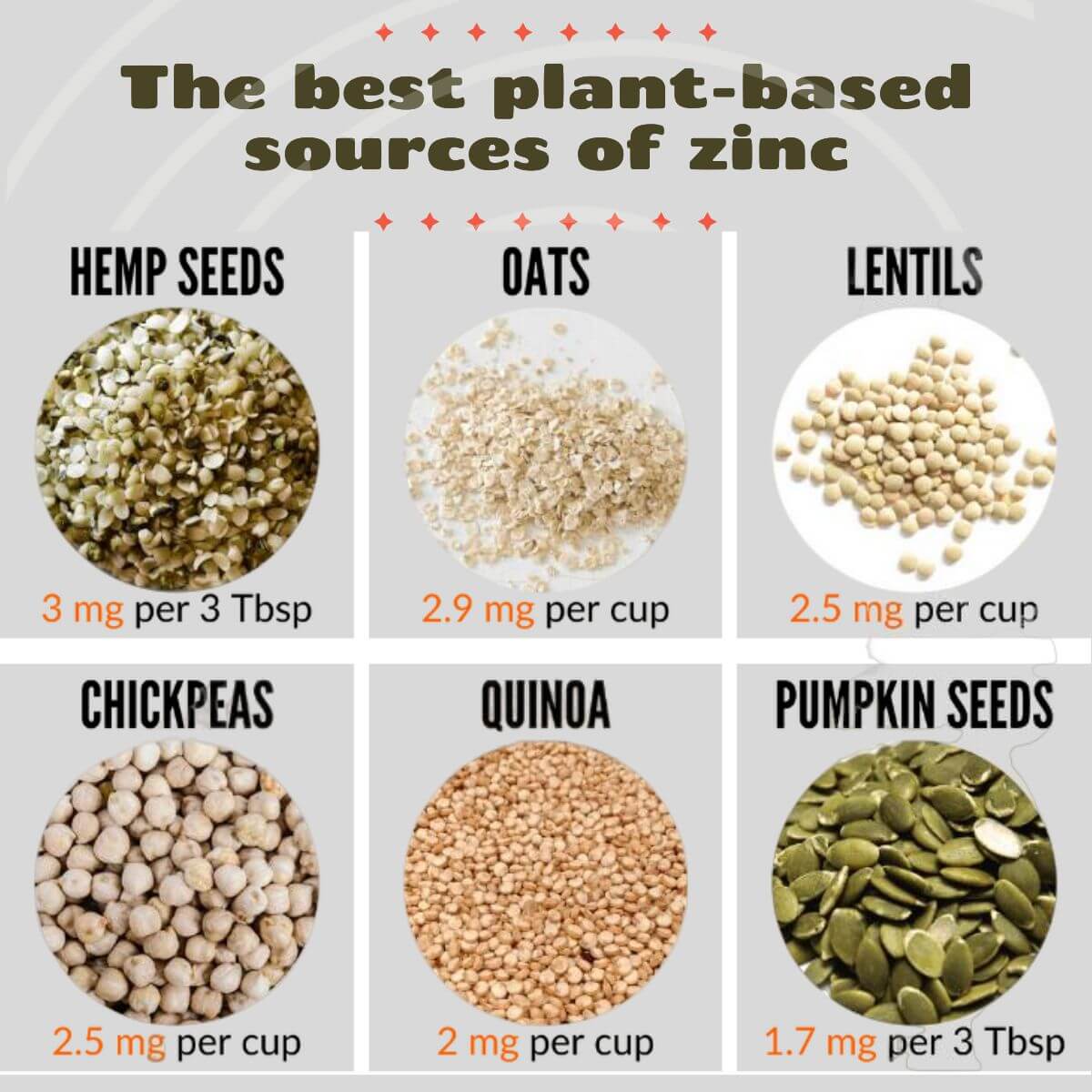
59 Nuts and Seeds Highest in Zinc, Zn for vegans and vegetarians
Ranked by a 100 gram Serving Size
11mg Zinc, Zn = 100% DV
| Row | Nuts and seeds rich in Zinc | Amount |
| 1 | Seeds Cottonseed Meal Partially Defatted | 12.3mg (112% DV) |
| 2 | Seeds Cottonseed Flour Partially Defatted | 11.7mg (106% DV) |
| 3 | Seeds Cottonseed Flour Low Fat | 11.6mg (106% DV) |
| 4 | Seeds Sesame Flour | 10.7mg (97% DV) |
| 5 | Seeds Sesame Butter Tahini From Unroasted Kernels (Non-Chemically Removed Seed Coat) | 10.5mg (95% DV) |
| 6 | Seeds Pumpkin And Squash Seeds Whole Roasted With Salt Added | 10.3mg (94% DV) |
| 7 | (Seeds Pumpkin And Squash Seeds Whole Roasted Without Salt) | 10.3mg (94% DV) |
| 8 | Seeds Sesame | 10.2mg (93% DV) |
| 9 | Seeds Watermelon Seed Kernels Dried | 10.2mg (93% DV) |
| 10 | Seeds Sesame Flour Low-Fat | 10mg (91% DV) |
| 11 | Hemp Seeds | 9.9mg (90% DV) |
| 12 | Dried Pumpkin And Squash Seeds | 7.8mg (71% DV) |
| 13 | Seeds Sesame Seeds Whole Dried | 7.8mg (70% DV) |
| 14 | Roasted Squash And Pumpkin Seeds | 7.6mg (69% DV) |
| 15 | Seeds Sesame Butter Paste | 7.3mg (66% DV) |
| 16 | Seeds Sesame Seeds Whole Roasted And Toasted | 7.2mg (65% DV) |
| 17 | Seeds Sesame Seed Kernels Dried (Decorticated) | 6.7mg (61% DV) |
| 18 | Nuts Pine Nuts Dried | 6.5mg (59% DV) |
| 19 | Seeds Cottonseed Kernels Roasted (Glandless) | 6mg (55% DV) |
| 20 | Mixed Seeds | 5.9mg (53% DV) |
| 21 | Cashews (Raw) | 5.8mg (53% DV) |
| 22 | Dry Roasted Sunflower Seeds | 5.3mg (48% DV) |
| 23 | Cashew Butter | 5.2mg (47% DV) |
| 24 | Safflower Seeds | 5.1mg (46% DV) |
| 25 | Dry Roasted Pecans | 5.1mg (46% DV) |
| 26 | Nuts Pecans Dry Roasted With Salt Added | 5.1mg (46% DV) |
| 27 | Seeds Sunflower Seed Butter Without Salt | 4.9mg (44% DV) |
| 28 | Nuts Mixed Nuts Oil Roasted Without Peanuts Without Salt Added | 4.7mg (42% DV) |
| 29 | Chia Seeds | 4.6mg (42% DV) |
| 30 | Sesame Butter (Tahini) | 4.6mg (42% DV) |
| 31 | Nuts Mixed Nuts Oil Roasted Without Peanuts Lightly Salted | 4.6mg (42% DV) |
| 32 | Nuts Pecans Oil Roasted Without Salt Added | 4.5mg (41% DV) |
| 33 | Pecans | 4.5mg (41% DV) |
| 34 | Pecans Salted | 4.4mg (40% DV) |
| 35 | Dried Pine Nuts | 4.3mg (39% DV) |
| 36 | Nuts Hickorynuts Dried | 4.3mg (39% DV) |
| 37 | Seeds Flaxseed | 4.3mg (39% DV) |
| 38 | Brazilnuts | 4.1mg (37% DV) |
| 39 | Trail Mix With Nuts | 3.8mg (34% DV) |
| 40 | Black Walnuts (Dried) | 3.4mg (31% DV) |
| 41 | Almond Butter | 3.3mg (30% DV) |
| 42 | Dry Roasted Almonds | 3.3mg (30% DV) |
| 43 | Nuts Almonds | 3.1mg (28% DV) |
| 44 | Nuts Butternuts Dried | 3.1mg (28% DV) |
| 45 | Nuts Walnuts English | 3.1mg (28% DV) |
| 46 | Peanut Butter | 3mg (27% DV) |
| 47 | Peanut Butter | 3mg (27% DV) |
| 48 | Nuts Almonds Blanched | 3mg (27% DV) |
| 49 | Dried Pilinuts | 3mg (27% DV) |
| 50 | Peanuts Dry Roasted | 2.8mg (25% DV) |
| 51 | Dried Japanese Chestnuts | 2.6mg (23% DV) |
| 52 | Hazelnuts | 2.5mg (22% DV) |
| 53 | Pistachio Nuts | 2.2mg (20% DV) |
| 54 | Trail Mix With Pretzels Cereal Or Granola | 2.2mg (20% DV) |
| 55 | Dried Coconut | 2.1mg (19% DV) |
| 56 | Seeds Breadnut Tree Seeds Dried | 1.9mg (17% DV) |
| 57 | Almond Paste | 1.5mg (13% DV) |
| 58 | Dried Chinese Chestnuts | 1.4mg (13% DV) |
| 59 | Macadamia Nuts | 1.3mg (12% DV) |
Source : myfooddata
How much zinc does our body need per day?
The recommended daily amount (RDA) for vegetarians is between 8 and 11 milligrams per day for women and between 11 and 14 milligrams per day for men (1). The tolerable upper intake level (UL) is 40 mg/day (2).
Since zinc plays such a vital role in healthy growth and development, children should get enough of this mineral each day.
There are several reasons why you may need more zinc, including the following:
If you come down with cold sores often or have other zinc deficiencies, you should take a look at your diet.
If you want strong hair and nails, adequate zinc is imperative.
Zinc is an essential mineral, meaning that we need a certain amount in our daily diet. Zinc is important for a variety of bodily functions and helps maintain the integrity of cells and tissues. It can also help promote wound healing, eye health and strong immune function.
Too much zinc in your diet can lead to nausea, vomiting, and stomach upset. Some people are more sensitive to the effects of zinc than others. If you have a balanced diet containing several different food sources, you likely get enough zinc from your foods to meet your needs. If you’re concerned about getting enough zinc, talk with your health care provider.
Summary
Zinc is an essential mineral and one of the most abundant in the human body. It’s a key factor for proper growth and development. Zinc is also necessary for normal function of our bodies and has been shown to promote healing from injury, improve immune system function, drive brain function, and promote healthy skin, hair and nails.
If you’re vegan or vegetarian, you may be missing out on essential nutrients. You can get your daily dose of zinc by eating a variety of plant foods, including beans, peas and grains like quinoa. Specific vegetables are also good sources of zinc, including leafy greens and root vegetables.
I am Sara and in this article ” Foods High in Zinc for Vegetarians and Vegans ” I tried to write here the best sources to supply your body with zinc
Do you have a zinc deficiency? Tell me in the comments what sources you used to supply the zinc your body needs.
